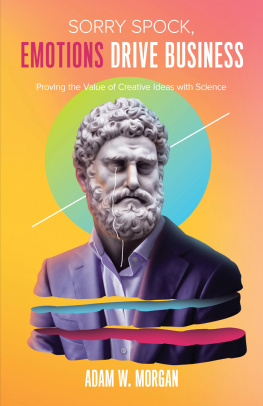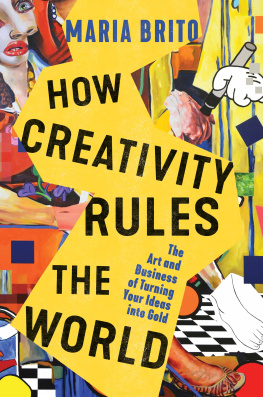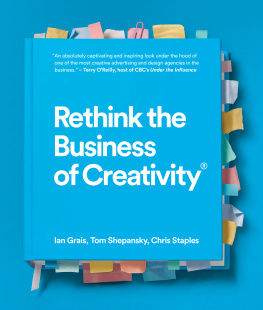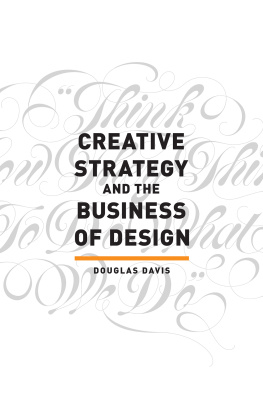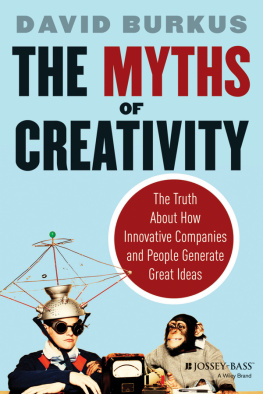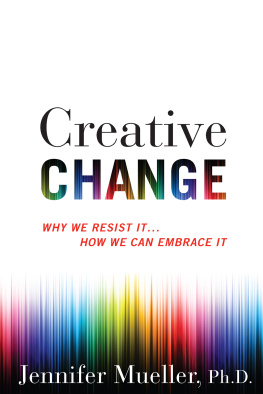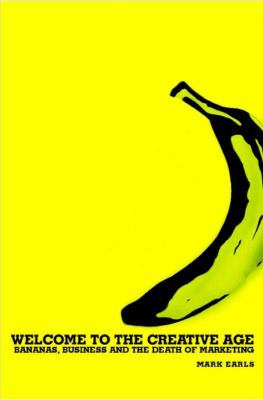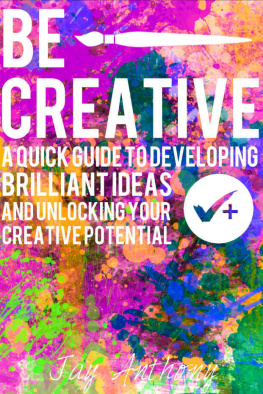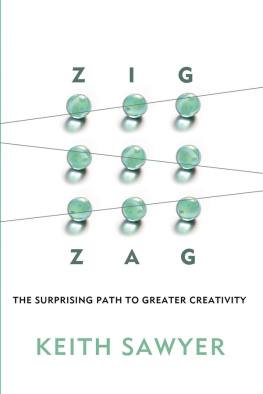Sorry Spock, EMOTIONS DRIVE BUSINESS
SORRY SPOCK,
EMOTIONS DRIVE BUSINESS
Proving the Value of Creative Ideas with Science
ADAM W. MORGAN

NEW YORK
LONDONNASHVILLEMELBOURNEVANCOUVER
Sorry Spock, Emotions Drive Business
Proving the Value of Creative Ideas with Science
2019 Adam W. Morgan
All rights reserved. No portion of this book may be reproduced, stored in a retrieval system, or transmitted in any form or by any meanselectronic, mechanical, photocopy, recording, scanning, or otherexcept for brief quotations in critical reviews or articles, without the prior written permission of the publisher.
Published in New York, New York, by Morgan James Publishing. Morgan James is a trademark of Morgan James, LLC. www.MorganJamesPublishing.com
ISBN 9781642790719 paperback
ISBN 9781642790726 eBook
Library of Congress Control Number: 2018942591
Cover Design by:
Magdiel Lopez
Interior Design by:
Christopher Kirk
www.GFSstudio.com

Morgan James is a proud partner of Habitat for Humanity Peninsula and Greater Williamsburg. Partners in building since 2006.
Get involved today! Visit
MorganJamesPublishing.com/giving-back
Dedicated to my mentorRon Stone.
PREFACE
I believe in ideas. Ideas can change the world. And creative ideas can certainly do a better job of building a brand.
Yet many in the advertising and marketing industries disagree. They consider creative ideas as marketing fluff. When recessions rise or profits plummet, their instinct is to stop using creative ideas and go back to straightforward and logical communications to save the day. Just the facts, maam.
They believe that so-called rational thought will prevail. That people will buy their products and services if they simply know all the superior product features and benefits.
Unfortunately, this strategy is just plain wrong.
Many books and studies have focused on proving that advertising works. Its no longer a debate. We know it works. But even bad advertising can work to some degree.
I want to prove that creative ideas work better . That emotional ideas actually boost the bottom line more than just a straightforward message. And I wont rely on popular case studies or creative examples that can be subjective.
I plan to use modern studies on the brain and neuroscience to prove that creative ideas work better. Im going to show through logical and rational arguments that emotional advertising isnt fluffy. Ill show research that describes how good ideas can boost success. Ill logically explain why emotional ideas are actually a sound business practice, not the babblings of peculiar artists and creative misfits. Its the right way to communicate with customersthe right way to build a business. More than that, its the best bet to improving the bottom line.
If marketing were simply a rational exercise, we would have landed on the perfect template by now. But its not a perfect science. Its also an art. Even in todays digital environment, artificial intelligence and analytics wont solve all our marketing challenges. Theyre powerful tools that guide our strategies, but at the end of the day, emotional ideas are still the most powerful way to reach a customers heart.
This book is written for the skeptics of creative advertising. The CEOs, marketing managers, accountants, VPs of sales, and anyone else who thinks its a waste of time. The proof has been out there, but not necessarily all in one place.
Im not claiming any new studies or discoveries on neuroscience, behavioral economics, or psychology. Im a marketer, not a scientist. So if you are a scientist or psychologist and youve already drafted a negative Amazon review blasting me for not offering new research, youve missed the point. This book is not for you. This is not for those with a deep interest in neuroscience. You certainly know more on the topic. My intent is to reframe it all for creative pursuits in marketing and business. So feel free to delete that review. Seriously.
Today, we have a wealth of data on how the human brain makes decisions. Most of it is explained in academic journals or scientific studies that are complex. This book is intended as an executive review of all that science, so that you can understand the big picture as it relates to creativity. Like Cliffs Notes for business decision makers.
What makes this book different from other books on neuromarketing is that I plan to use all this great information toward a unique lens on creative marketing. Most other books in this category focus on how to improve your sales or to understand how customers make decisions. This is different. Its all about showing how creative and emotional ideas are a better way to communicate as marketers.
Theres a new golden age of creativity thats about to begin. And its based on the fact that science has finally caught up with creativity. Creative ideas are no longer a black box. Design-led companies are proving that emotional triggers equal a healthy profit. And creativity doesnt have to be a threat to strategic thought. Its time to stop relying on old and inaccurate instincts and start creating better experiences for our customers.
My hope is that we can move away from the typical battlefield of logic versus creativity, so that both have an equal seat at the marketing table. This debate has raged on for decades and we now have the data to end it. We need to better understand creative ideas so that they dont make marketers nervous. Because creative ideas shouldnt be scary.
And once youre convinced that creative ideas work better, the latter part of this book will explore ways that you can put all this knowledge into action. Ill review the basic marketing pitch that many agencies and experts use when showing how their ideas break through the clutter and reach your audiences. And then Ill describe that same process through the lens of neuroscience, so you know whats going on in your customers heads when they see a creative message.
Ill also discuss how to recognize good ideas and offer a few ways to use this new understanding to make better marketing decisions. Ill discuss the right ways to measure and judge creativity. Ill also share a few examples to improve internal branding practices and how to build up your personal marketing gut so you can create better marketing plans and optimize your marketing with a balanced approach. And finally, Ill explore how to think more intuitively, so you can tap into your whole brain and become a dynamic leader.
And if you already believe in creative ideas, hopefully I can provide enough background and ammo, so you can help those who dont understand the value of creativity. Like that tricky client or internal stakeholder. You can challenge their built-in cultural biases and offer a logical argument for the need to balance both emotional and rational ideas. You can help them understand the value of design, emotional marketing, and content that drives a holistic customer experience. Or just hand them a copy of this book. (I know, too soon.)
Its time to embrace both logic and creativity as equals. So that when you are faced with a choice of publishing an emotionally charged idea, you wont avoid it and go with something safe. Because you will know how a creative idea will give you a bigger return on your marketing dollar.
ACT I
THE NEED FOR CREATIVE IDEAS
Chapter 1
THE PITCH MEETING
W ell? What do you think? Which idea do you like best?

